The RBC’s Emerging Artist People’s Choice Award / Reimagining Clay selected five ceramics artists from all over Canada to compete for the prize of $10,000. Derya Akay (Vancouver), David R.Harper (Toronto), Lisa Hendriques (Vancouver), Veronika Horlik (Montreal), and Zane Wilcox (Regina) were nominated and then given funding and space to create and display their work. The resulting exhibition is a highly unique group of work with each artist’s section being an exhibition by itself. Naturally, there is no common theme among the artists except the material. However, even the material has been used so diversely by the artists that ‘ceramics’ would not be the first words to appear in describing them.
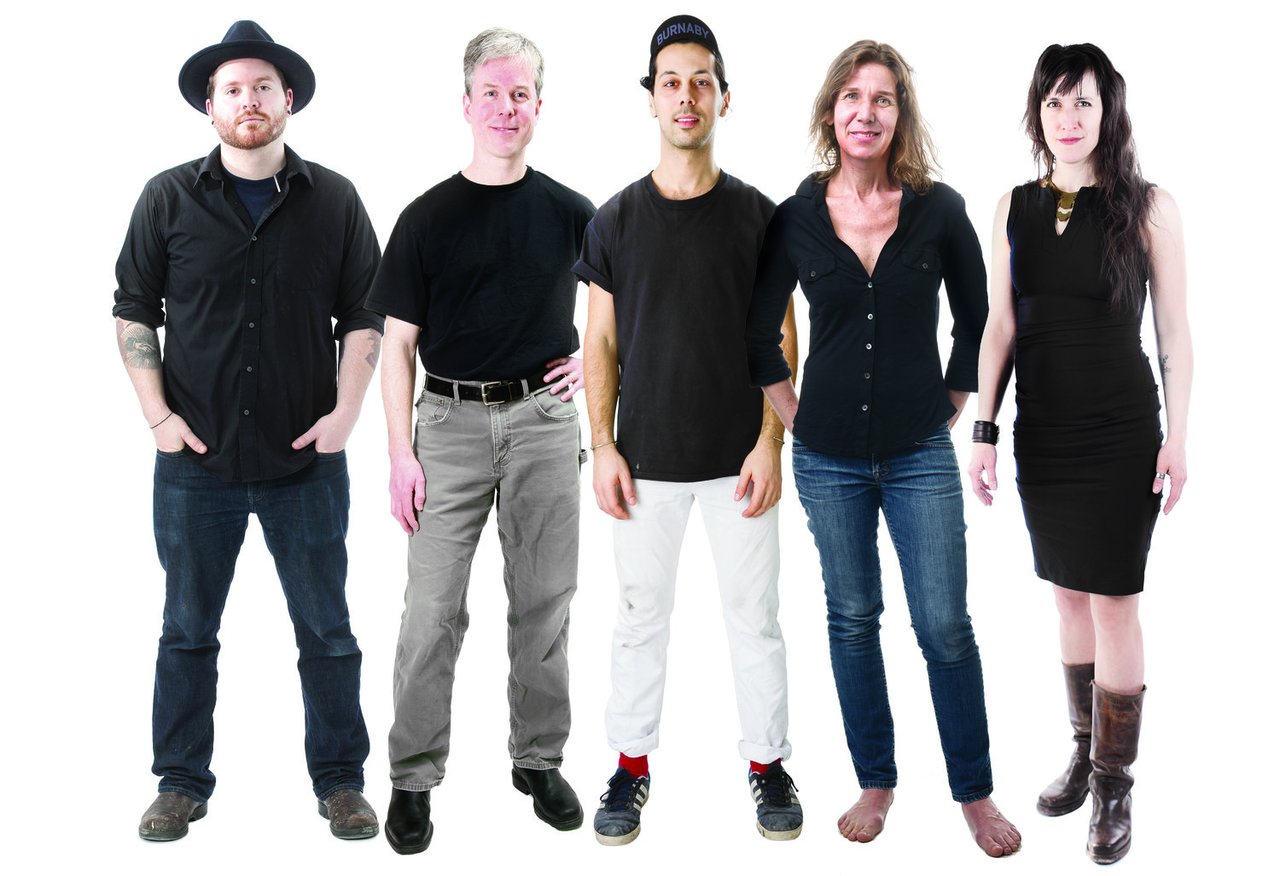 From left to right: Artists David R.Harper, Zane Wilcox, Derya Akay, Lisa Hendriques and Veronika Horlik
From left to right: Artists David R.Harper, Zane Wilcox, Derya Akay, Lisa Hendriques and Veronika Horlik
In this special exhibition at the Gardiner Museum, each artist has a private space, with giant quotes placed on the walls. All the works are intricate and complex. Derya Akay’s “cyclodrum potbound & soup from the stone” has a material list so long that it takes up most of his didactic panel. Food, notes, ceramic blobs, and paint marks (to name a few) are displayed on kinetic wooden models that imply movement through the faint paint marks on the walls. There are also huge jars of pickles displayed on top of acrylic boxes. I can only assume that these are actually edible based on Akay’s other works. Next to these eclectic pieces Lisa Hendriques displays two beautiful ceramic bowls that carry the artistic values of her experience in Vume, South Africa, where she learned the village’s traditional clay practices.
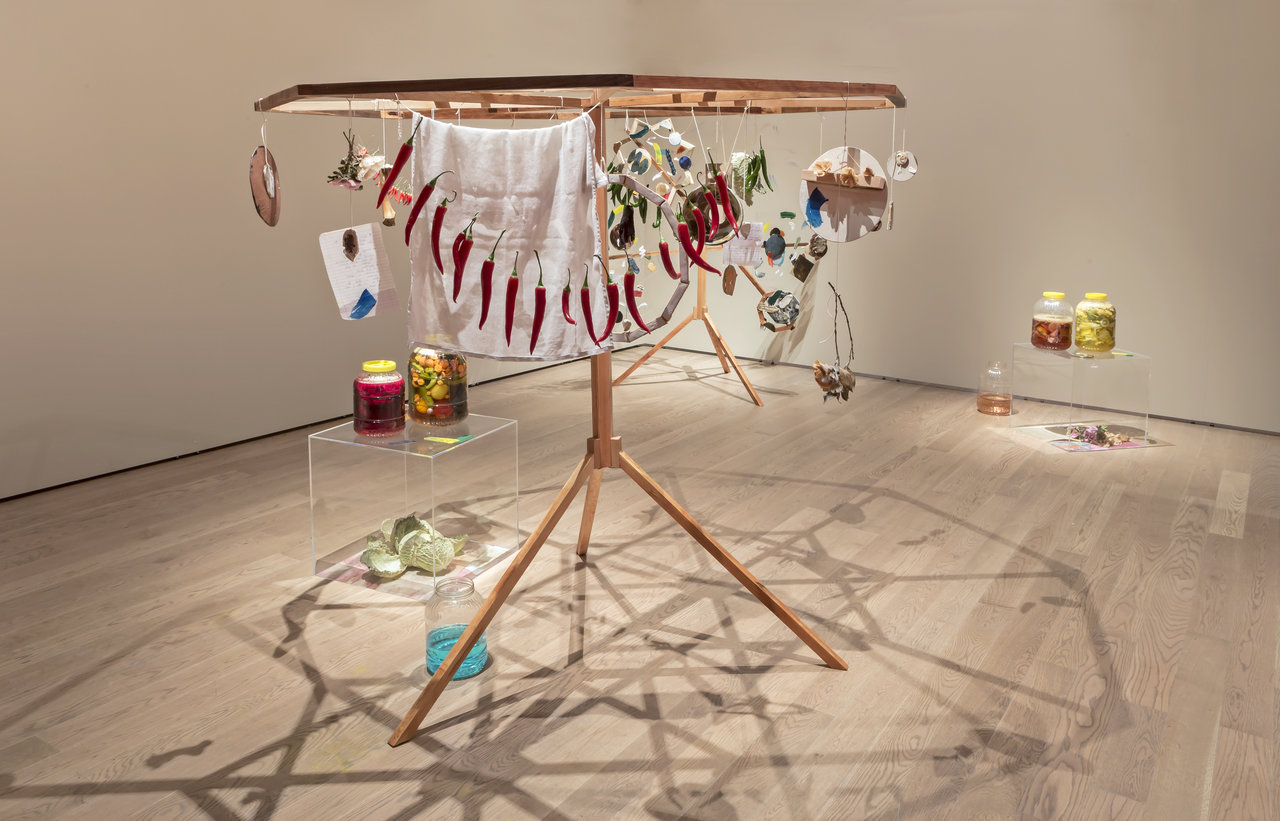 Derya Akay, cyclodrum potbound & soup from the stone, 2015, detail
Derya Akay, cyclodrum potbound & soup from the stone, 2015, detail
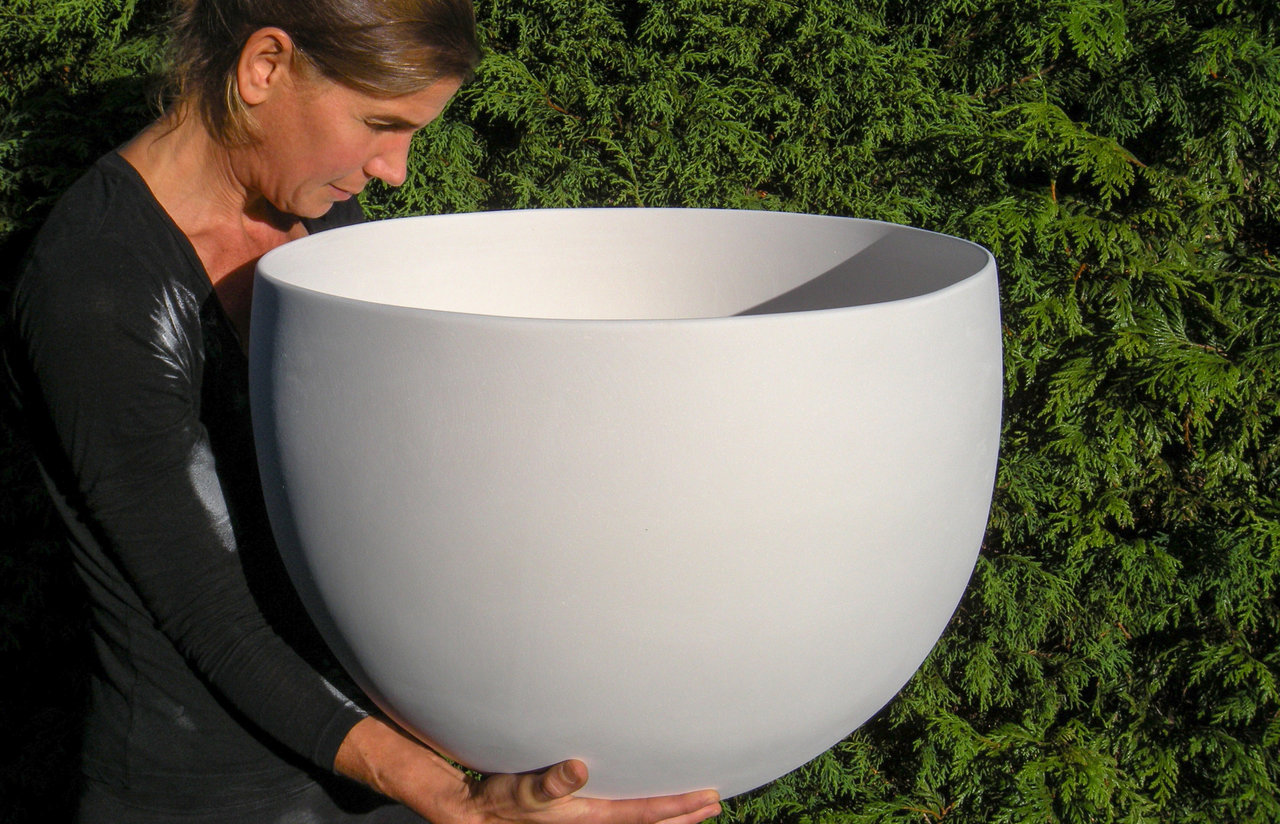 Lisa Hendriques with one of her ceramic bowls
Lisa Hendriques with one of her ceramic bowls
Zane Wilcox has created minimalist, however, not simple, pieces. “Perceptual Playground” fits its name perfectly with its playfulness. There are three geometric sculptures of wood and ceramics, accompanied by three pieces that are halves of the first three, each situated in front of a mirror. Wilcox creates an odd relationship between these three pairs of objects. The original three are unique sculptures and allow the viewer to walk around while the mirrored three are identical on both sides. The irony of the show is that the three dimensional images are already visible in the mirrors, so there is no need to walk around the original pieces. It questions the viewer’s perception and creates a somewhat confusing yet playful experience. David R.Harper’s very unusual display would be more expected in a natural history museum. Clay sculptures of skulls, horns, claws, and crystal rocks are placed in vitrines or displayed on the the floor like objects in an anthropologist’s storeroom. However, they are all artificial as the extremely white porcelain of the bones suggest. In this work, he attempts to re-create parts of others, who have passed away, as a memento in order to be reminded of them, knowing that the replication is the ritual.
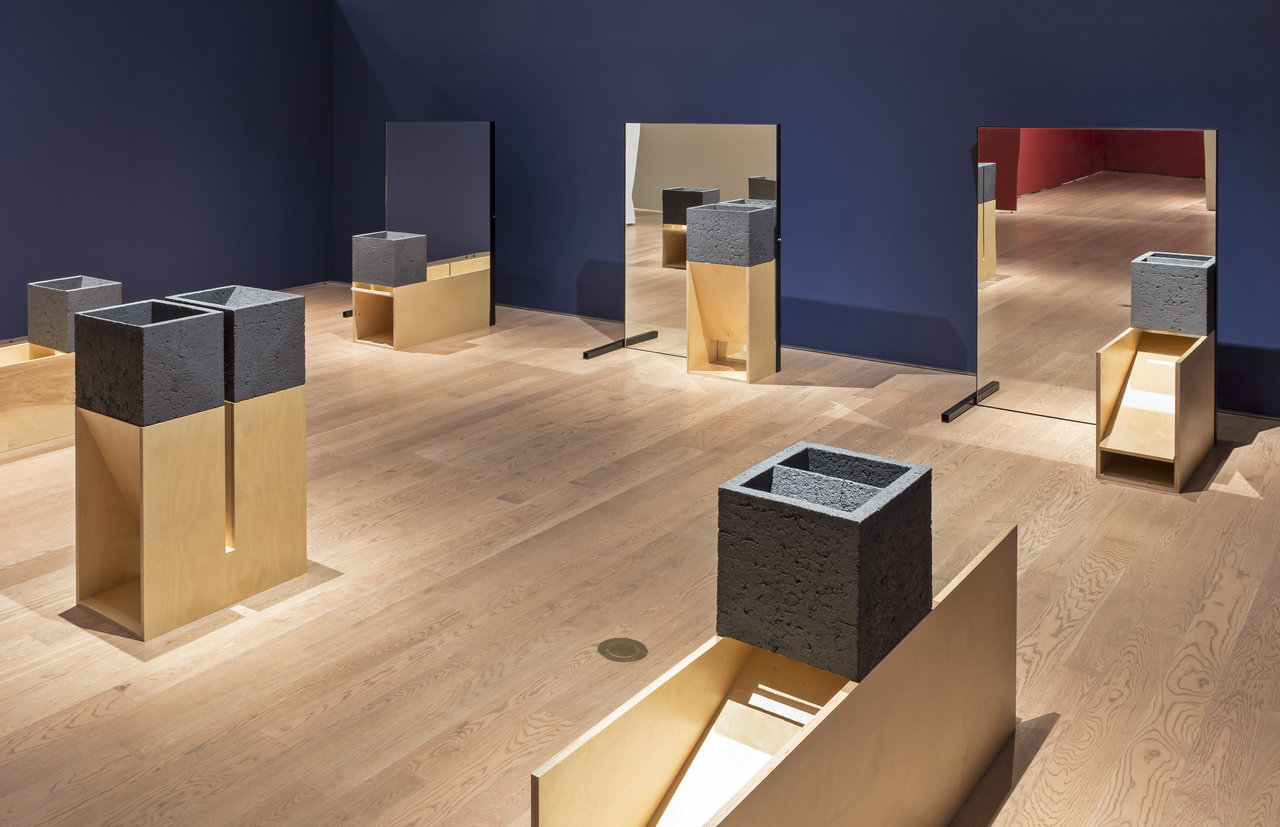 Zane Wilcox, Perceptual Playground, 2015, installation view
Zane Wilcox, Perceptual Playground, 2015, installation view
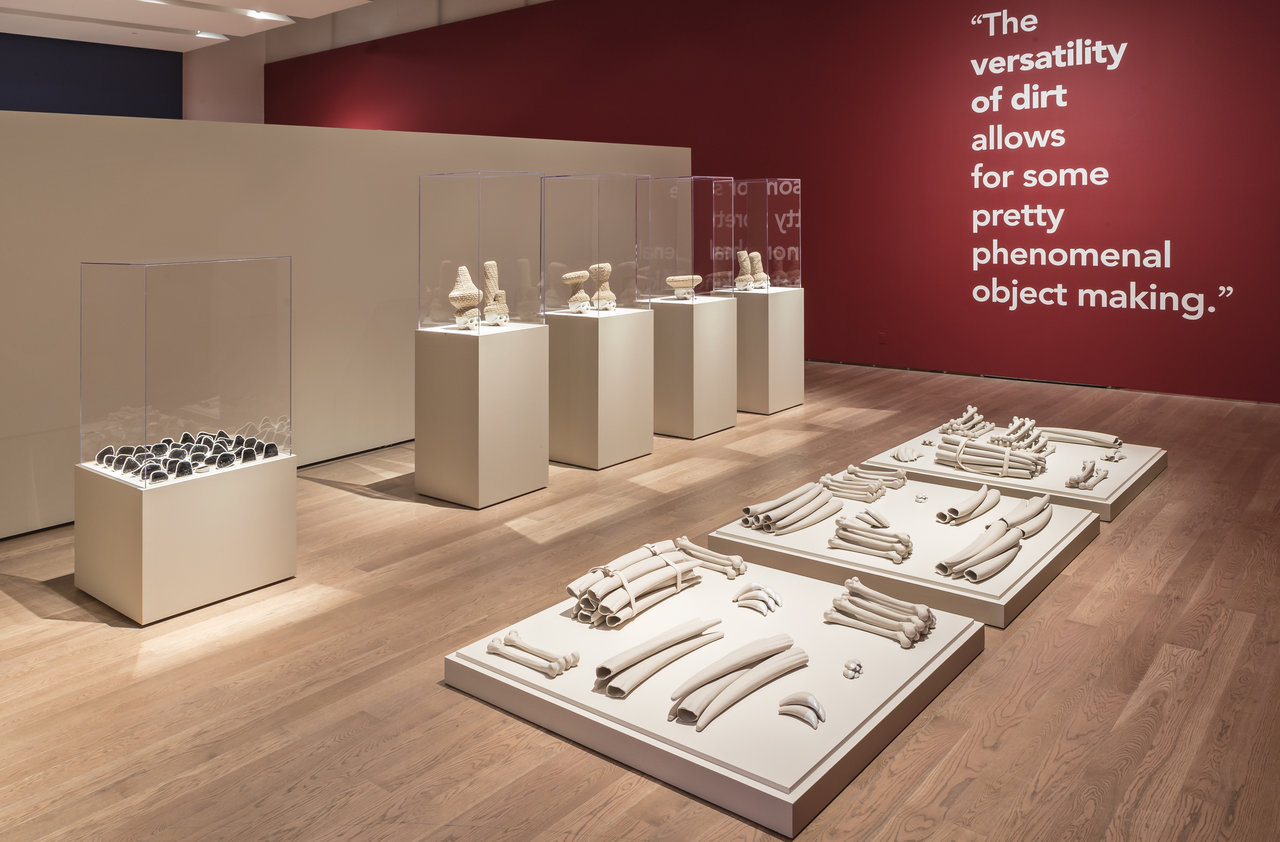 Installation view of David R. Harper’s works
Installation view of David R. Harper’s works
Veronika Horlik’s works are intriguing. She combines different elements of Canadian and Japanese cultures. She comments on the logging practices in Canada by using mangled pieces of burnt tree chunks placed in large panels with pictures of a logging town. Horlik then pairs these images with a Japanese game where a player collects various objects and compresses them into a giant ball, shoots it out into space to create a star. As an outcome of these combined cultures there is a sizable collection of ceramic leaves and small stars on the dark wall that resembles the sky. Horlik creates a narrative through the relationship of these two cultures, by ejecting the cluster of burnt trees into the space, as if to create a fresh start for them or a new star.
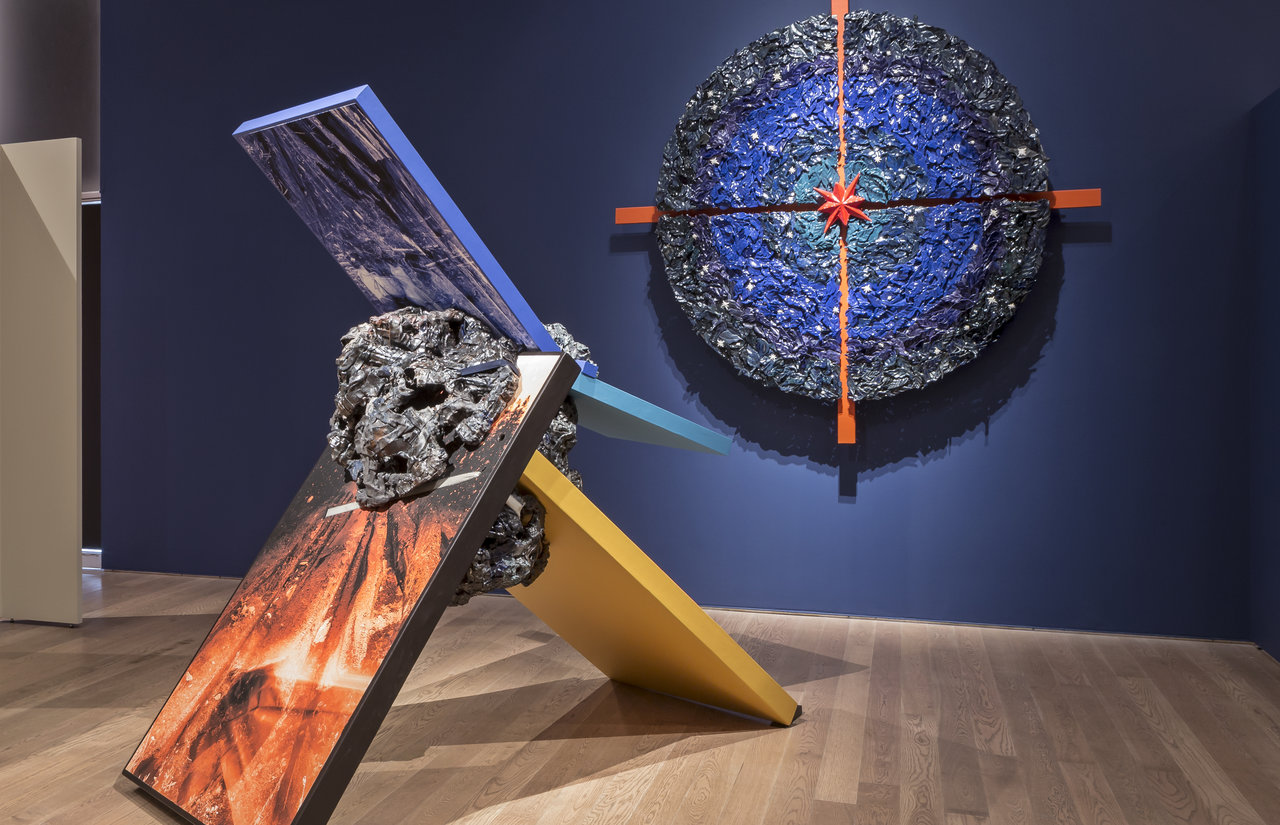 Installation view with Veronika Horlik’s work, Prouns (Slash), 2015
Installation view with Veronika Horlik’s work, Prouns (Slash), 2015
Visitors are invited to vote on their favourite artist, and can do so both in person and online at http://www.gardinermuseum.on.ca/pages/cast-your-vote , between June 18 and August 3, 2015.
Sunny Kim
Images are courtesy of the Gardiner Museum
*Exhibition information: June 18 – August 30, 2015, The Gardiner Museum, 111 Queen’s Park, Toronto. Gallery hours: Mon – Thu, 10 – 6, Fri, 10 – 9, Sat – Sun, 10 – 5 p.m.
